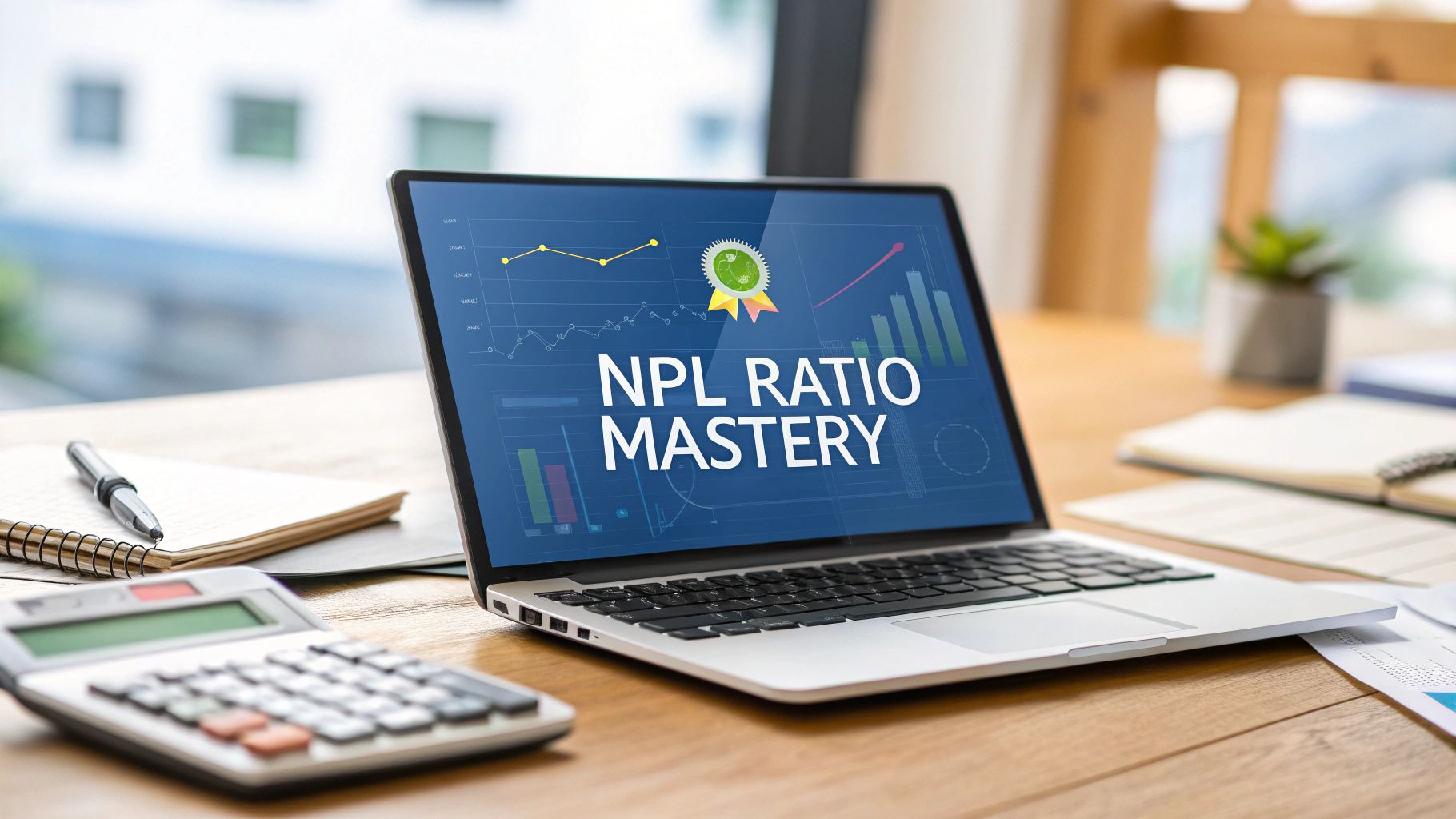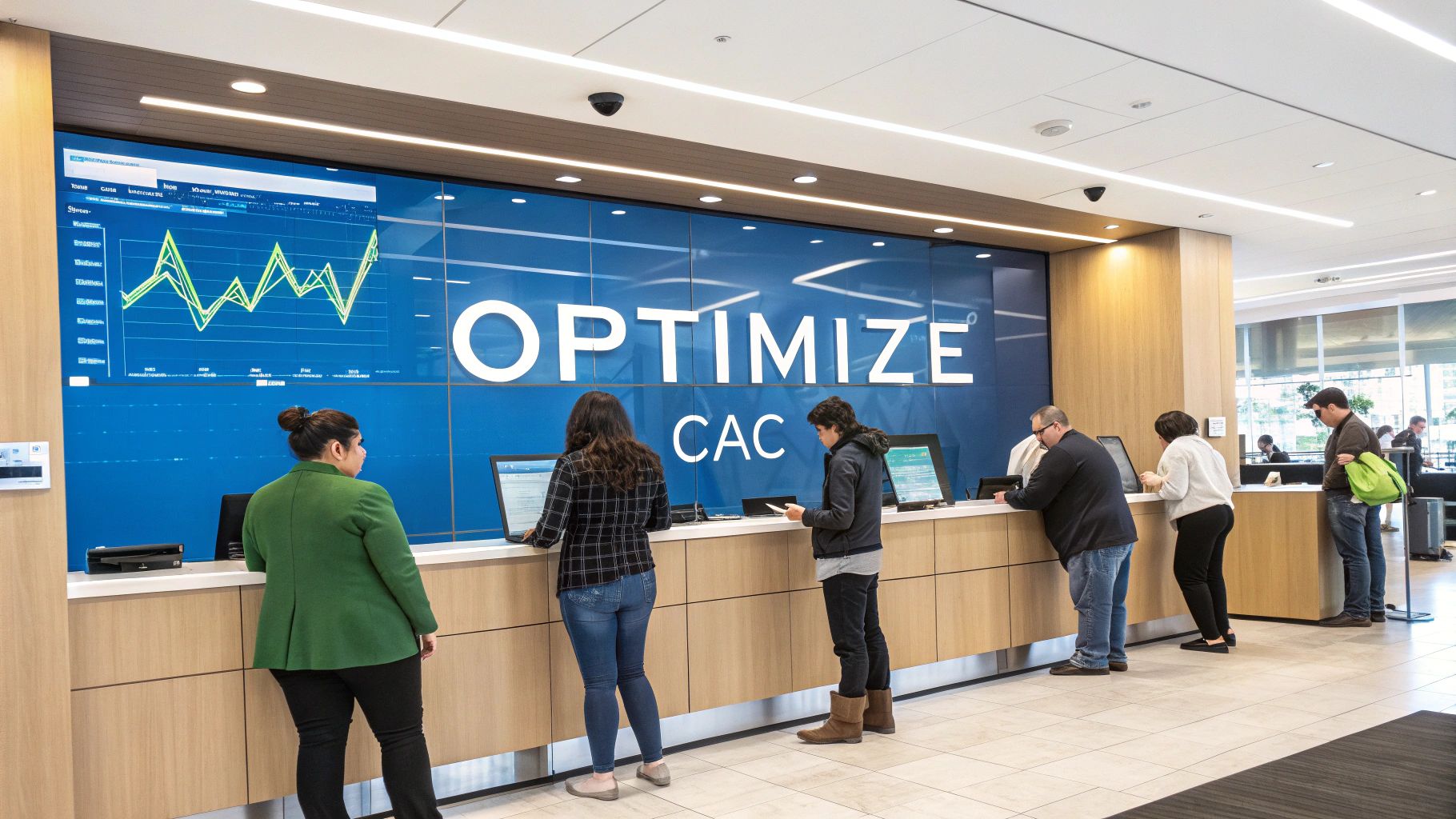<strong>The Ultimate Guide to Bank Loans: How to Find the Best Deal and Avoid Getting Burned</strong>
Banking Knowledge Base
Estimated reading time: 20 minutes
I. Introduction
A bank loan is a type of financing that involves a borrower receiving money from a bank or other financial institution and agreeing to repay it over a set period of time. Bank loans are often used to fund large expenses, such as purchasing a car or home, starting a business, or consolidating debt. However, with a wide variety of loans available, each with its own set of terms and conditions, it's important to understand the different types of loans and their associated costs to ensure that you make the best borrowing decision for your needs.
For example, personal loans are unsecured loans that can be used for a variety of purposes, including home improvements, medical expenses, and other unexpected costs. Car loans, on the other hand, are secured loans that are used to finance the purchase of a car, and are typically secured by the vehicle itself. Home equity loans are another type of secured loan, in which the borrower uses the equity in their home as collateral to borrow money. Business loans, as the name suggests, are used by businesses to fund operations, expansion, or other expenses.
Regardless of the type of loan, it's important to understand the terms and conditions associated with each loan. This includes the loan term, which refers to the length of time that the borrower has to repay the loan, and the interest rate, which determines how much the borrower will pay in interest over the life of the loan. Understanding these terms and conditions can help you make the best borrowing decision for your situation. In this article, we'll explore the different types of bank loans available and the important considerations you should keep in mind when choosing a loan.
II. What Are the Different Types of Bank Loans Available and Which One Is Right for You?
Bank loans come in many different forms, each with their own set of terms and conditions. It's important to understand the different types of loans and their associated costs to make the best borrowing decision for your needs. Here are some of the most common types of bank loans and a brief explanation of what they're used for:
Personal loans: Personal loans are unsecured loans that can be used for a variety of purposes, such as debt consolidation, home improvements, or unexpected expenses. They typically have fixed interest rates and loan terms, and the loan amount and interest rate are based on the borrower's creditworthiness.
Car loans: Car loans are secured loans that are used to finance the purchase of a car. The loan is secured by the vehicle itself, which means that the lender can repossess the car if the borrower fails to make payments. Car loans typically have fixed interest rates and loan terms, and the loan amount is based on the value of the car.
Home equity loans: Home equity loans are secured loans that allow homeowners to borrow against the equity in their homes. The loan is secured by the home, which means that the lender can foreclose on the home if the borrower fails to make payments. Home equity loans typically have fixed interest rates and loan terms, and the loan amount is based on the value of the home.
Business loans: Business loans are used by businesses to fund operations, expansion, or other expenses. There are many different types of business loans, including lines of credit, term loans, and SBA loans. The loan terms and conditions depend on the lender and the type of loan, but generally require the borrower to have a solid business plan and good creditworthiness.
Choosing the right type of loan depends on your financial situation and your borrowing needs. Personal loans are a good option for those with good credit who need to borrow a smaller amount of money for a variety of purposes. Car loans are a good option for those who need to finance the purchase of a vehicle. Home equity loans are a good option for homeowners who have significant equity in their homes and need to borrow a larger amount of money. Business loans are a good option for entrepreneurs and small business owners who need funding for their businesses.
Understanding the different types of bank loans available is important when considering borrowing money from a bank. Each type of loan has its own set of terms and conditions, and choosing the right one can depend on your specific financial situation and borrowing needs. It's important to carefully evaluate your options and compare the terms and conditions of different lenders before making a decision.
III. What You Need to Know About Interest Rates and Bank Loans
Loan terms and interest rates are two key factors to consider when selecting a bank loan. Understanding how these factors work can help borrowers make informed decisions about their borrowing options.
Loan term is the length of time that the borrower has to repay the loan. Loan terms can range from a few months to several years, depending on the type of loan and the lender. Generally, longer loan terms result in lower monthly payments but higher total interest costs, while shorter loan terms result in higher monthly payments but lower total interest costs.
When selecting a loan term, borrowers should consider their ability to make payments over the length of the loan. Longer loan terms may seem more affordable due to the lower monthly payments, but borrowers may end up paying significantly more in interest over the life of the loan. On the other hand, shorter loan terms can result in higher monthly payments, which can be challenging for borrowers with limited cash flow. It's important for borrowers to find a balance between their ability to make payments and their desire to pay off the loan as quickly as possible.
Interest rates determine the amount of interest the borrower will pay over the life of the loan. Interest rates are determined by the lender and are based on several factors, including the borrower's creditworthiness, the loan amount, and the loan term. Generally, borrowers with higher credit scores are offered lower interest rates than those with lower credit scores.
To compare interest rates between different lenders, borrowers should look at the annual percentage rate (APR) of the loan. The APR includes both the interest rate and any additional fees associated with the loan, such as origination fees or closing costs. The APR provides a more accurate representation of the total cost of the loan and can help borrowers compare the cost of borrowing from different lenders.
Understanding loan terms and interest rates is crucial when considering a bank loan. Borrowers should carefully evaluate their ability to make payments over the length of the loan and compare interest rates between different lenders to ensure that they choose the best loan for their needs. By taking the time to understand these factors, borrowers can make informed decisions about their borrowing options and avoid taking on more debt than they can handle.
IV. How Much Money Can You Borrow from a Bank, and What Factors Affect Borrowing Limits?
Borrowing limits and collateral are two important factors to consider when applying for a bank loan. Understanding how these factors work can help borrowers make informed decisions about their borrowing options.
Borrowing limits refer to the maximum amount of money that a borrower can receive from a lender. The amount a borrower can typically borrow from a bank depends on the type of loan and the borrower's creditworthiness. Personal loans, for example, can range from a few thousand dollars to tens of thousands of dollars, while business loans can be much larger. Lenders consider a borrower's credit score, income, and debt-to-income ratio when determining how much they can lend.
Collateral is an asset that a borrower pledges as security for a loan. If the borrower fails to repay the loan, the lender can seize the collateral to recoup their losses. The type of collateral required varies depending on the type of loan. Secured loans, such as car loans and home equity loans, require collateral, while unsecured loans, such as personal loans, do not. The value of the collateral also affects the loan terms. For example, a borrower who pledges a more valuable asset as collateral may be able to secure a larger loan or a lower interest rate.
When considering a loan that requires collateral, borrowers should carefully evaluate the asset they're pledging. The value of the collateral should be sufficient to cover the amount of the loan, and the borrower should be comfortable with the risk of losing the asset if they default on the loan. In addition, borrowers should be aware of the terms and conditions associated with the loan. Secured loans generally have more stringent terms and conditions, such as higher interest rates and shorter loan terms.
It's important for borrowers to carefully evaluate their borrowing needs and creditworthiness when considering a bank loan. Borrowers with good credit and stable income are more likely to be approved for larger loan amounts with more favorable terms. However, all borrowers should carefully consider the risks and benefits of pledging collateral for a loan. By taking the time to understand borrowing limits and collateral requirements, borrowers can make informed decisions about their borrowing options and avoid taking on more debt than they can handle.
Understanding borrowing limits and collateral requirements is crucial when considering a bank loan. Borrowers should carefully evaluate how much they can borrow and whether they're comfortable pledging collateral for a loan. By taking the time to understand these factors, borrowers can make informed decisions about their borrowing option and avoid taking on more debt than they can handle.
V. Secured vs. Unsecured Loans
When applying for a bank loan, it's important to understand the difference between secured and unsecured loans. Each type of loan has its own set of advantages and disadvantages, and borrowers should carefully consider their options before making a decision.
Secured loans are loans that are backed by collateral, such as a car or a home. Because the lender has the security of the collateral, secured loans generally have lower interest rates and higher borrowing limits than unsecured loans. The downside of secured loans is that if the borrower is unable to repay the loan, the lender can seize the collateral to recoup their losses. This can result in the loss of the collateral, which can be a significant financial loss for the borrower.
Unsecured loans, on the other hand, are not backed by collateral. Because there is no collateral to secure the loan, unsecured loans generally have higher interest rates and lower borrowing limits than secured loans. However, unsecured loans do not require collateral, which can be appealing to borrowers who do not want to risk losing their assets. The downside of unsecured loans is that they are generally more difficult to qualify for than secured loans, as lenders consider the borrower's creditworthiness and ability to repay the loan.
When deciding between a secured and unsecured loan, borrowers should carefully evaluate their needs and their ability to repay the loan. Secured loans may be a good option for borrowers who need a larger loan amount and have assets to pledge as collateral. Unsecured loans may be a good option for borrowers who do not have collateral to pledge and have good credit and stable income.
Understanding the difference between secured and unsecured loans is crucial when considering a bank loan. Each type of loan has its own set of advantages and disadvantages, and borrowers should carefully evaluate their options before making a decision. By taking the time to understand these factors, borrowers can make informed decisions about their borrowing options and avoid taking on more debt than they can handle.
VI. What Credit Score Do You Need to Get Approved for Different Types of Bank Loans?
When applying for a bank loan, one of the key factors that lenders consider is the borrower's credit score. The credit score is a numerical representation of the borrower's creditworthiness, based on their credit history and other financial factors. A high credit score can increase the borrower's chances of being approved for a loan, while a low credit score can make it more difficult to get approved or result in higher interest rates.
Different types of loans may have different credit score requirements. For example, personal loans may require a credit score of at least 600, while home loans may require a credit score of 620 or higher. Business loans may have even higher credit score requirements, depending on the lender and the type of loan. Generally, the higher the credit score, the lower the interest rate and the more favorable the loan terms.
In addition to the credit score, lenders also consider other factors when evaluating loan eligibility, such as the borrower's income, debt-to-income ratio, and employment history. Borrowers with stable income and low debt-to-income ratios are more likely to be approved for loans than those with unstable income and high debt-to-income ratios.
To improve their chances of being approved for a loan, borrowers should focus on improving their credit score by paying bills on time, keeping credit card balances low, and avoiding opening new lines of credit. They should also carefully evaluate their borrowing needs and ability to repay the loan before applying.
Credit score is an important factor in loan eligibility, and borrowers should carefully evaluate their creditworthiness before applying for a bank loan. Different types of loans may have different credit score requirements, and borrowers with higher credit scores are more likely to be approved for loans with more favorable terms. By taking the time to understand these factors and improve their creditworthiness, borrowers can make informed decisions about their borrowing options and avoid taking on more debt than they can handle.
VII. Can You Get a Bank Loan Without a Job in the USA, and What Are Your Options?
While having a job is often a key factor in getting approved for a bank loan, there are some options available for getting a loan without a job. These options may be more limited than traditional bank loans, and may come with higher interest rates and stricter terms.
One option for getting a loan without a job is to use collateral. Some lenders may be willing to offer a secured loan to borrowers who have assets, such as a car or a home, that can be pledged as collateral. These loans may come with lower interest rates and higher borrowing limits than unsecured loans, but borrowers should carefully consider the risks of pledging collateral for a loan.
Another option is to get a co-signer. A co-signer is someone who agrees to be responsible for the loan if the borrower is unable to repay it. Having a co-signer can increase the borrower's chances of being approved for a loan, as the lender can consider the co-signer's income and creditworthiness as well. However, co-signers should carefully evaluate the risks of being responsible for someone else's debt before agreeing to co-sign a loan.
In addition to these options, there are alternative lenders and peer-to-peer lending platforms that may be more willing to offer loans to borrowers without jobs. These lenders may offer loans with higher interest rates and more stringent terms, but they may be a viable option for borrowers who do not qualify for traditional bank loans.
Getting a loan without a job can be challenging, but there are some options available for borrowers who need to borrow money. Using collateral, finding a co-signer, and exploring alternative lenders and peer-to-peer lending platforms are all potential options for getting a loan without a job. However, borrowers should carefully consider the risks and costs of these options before applying for a loan.
VIII. What Documents and Information Are Required to Complete a Loan Application?
The loan application process can be a complex and lengthy process, but it is a crucial step in securing the funds needed to finance important purchases or investments. Here are the typical steps involved in the loan application process:
- Determine your borrowing needs and creditworthiness. Before applying for a loan, you should evaluate your financial situation and determine how much you need to borrow and whether you meet the lender's credit score and income requirements. This involves taking a careful look at your budget and expenses to determine how much you can afford to borrow and repay. It is also important to check your credit report to see where you stand in terms of creditworthiness and to identify any potential issues that may affect your loan application.
- Research lenders and loan options. Once you have determined your borrowing needs and creditworthiness, you should research lenders and loan options to find the best fit for your needs. Consider factors such as interest rates, loan terms, and borrowing limits. It is also important to read the terms and conditions of each loan option carefully to understand the repayment terms, any potential fees, and any penalties for late payments or early repayment.
- Complete the loan application. The loan application will require you to provide personal and financial information, such as your name, address, social security number, and employment history. You may also need to provide documentation, such as pay stubs, tax returns, and bank statements. Be sure to gather all the necessary documents in advance so you can submit the application quickly and efficiently.
- Wait for the lender's response. Once you have submitted the loan application and supporting documentation, you will need to wait for the lender to review your application and make a decision. This can take anywhere from a few days to several weeks, depending on the lender and the type of loan. During this time, the lender may contact you for additional information or to clarify certain aspects of your application.
- Receive the loan funds. If your loan application is approved, the lender will disburse the loan funds to you according to the terms of the loan agreement. This may be done through direct deposit, check, or other means. It is important to understand the terms and conditions of the loan agreement and to carefully review the loan documents before accepting the loan funds.
In addition to these steps, it is important to consider other factors that may affect the loan application process. For example, having a co-signer on the loan can increase your chances of being approved for a loan or receiving more favorable terms. It is also important to understand the potential risks and consequences of borrowing money and to carefully evaluate whether the loan is necessary and affordable.
The loan application process can be a lengthy and complex process, but it is a crucial step in securing the funds needed to finance important purchases or investments. By taking the time to carefully evaluate your borrowing needs and creditworthiness, research lenders and loan options, and gather the necessary documentation and information, you can increase your chances of being approved for a loan and receiving the funds you need.
IX. What Are the Risks of Paying Off a Loan Early, and How Can You Minimize Them?
Paying off a loan early can be a smart financial move, as it can help borrowers save money on interest and reduce their overall debt burden. However, there are some risks associated with early loan repayment that borrowers should be aware of.
To pay off a loan early, borrowers can make additional payments or pay off the entire loan balance before the end of the loan term. Some lenders may charge prepayment penalties or fees for early repayment, so borrowers should carefully review the terms and conditions of their loan agreement to understand the potential costs of early repayment. In many cases, however, early loan repayment can help borrowers save money on interest and reduce their overall debt burden.
There are some risks associated with early loan repayment that borrowers should be aware of. For example, if a borrower pays off a loan too quickly, they may not have enough cash on hand to cover unexpected expenses or emergencies. This can lead to financial stress and may force the borrower to take on more debt or miss payments on other bills.
There are also some types of loans that are riskier than others, and may be more difficult to pay off early. For example, payday loans and title loans typically have very short repayment terms and high interest rates, making it difficult for borrowers to pay them off early. These types of loans can quickly become a financial burden, and may lead to a cycle of debt and financial instability.
Paying off a loan early can be a smart financial move, but borrowers should carefully consider the risks and costs of early loan repayment before taking action. By reviewing the terms and conditions of their loan agreement, making a plan for early repayment, and carefully managing their finances, borrowers can successfully pay off their loans early and reduce their overall debt burden. However, borrowers should also be aware of the risks associated with early loan repayment, and carefully evaluate the types of loans they take out to avoid getting into a cycle of debt and financial instability.
X. How Do I Choose the Right Bank Loan for My Needs, and What Factors Should I Consider?
Choosing the right bank loan can be a daunting task, but it is an important decision that can have a significant impact on your financial well-being. Here are some factors to consider when choosing a loan that is right for your needs:
- Determine your borrowing needs. The first step in choosing the right loan is to determine your borrowing needs. Consider how much you need to borrow, what the money will be used for, and how long you will need to repay the loan. It's important to evaluate your budget and cash flow to ensure that you can comfortably afford the loan payments without sacrificing your other financial goals.
- Research loan options. Once you have determined your borrowing needs, research loan options to find the best fit for your needs. There are many types of bank loans available, including personal loans, car loans, home equity loans, and business loans. Each loan type has its own requirements, terms, and conditions, so it's important to understand the specific features of each option before making a decision.
- Compare interest rates. One of the most important factors to consider when choosing a loan is the interest rate. The interest rate determines the cost of borrowing and affects the total amount of money you will need to repay over the life of the loan. Be sure to compare interest rates between different lenders to find the best deal. Keep in mind that the interest rate may vary depending on the type of loan, the amount borrowed, and the borrower's creditworthiness.
- Consider fees and other charges. In addition to the interest rate, borrowers should also consider any fees and charges associated with the loan. This may include application fees, origination fees, and prepayment penalties. Be sure to factor these costs into your overall cost of borrowing when comparing loan options. For example, a loan with a low interest rate but high fees may end up being more expensive than a loan with a slightly higher interest rate but lower fees.
- Evaluate the loan terms. Finally, be sure to carefully evaluate the loan terms before choosing a loan. This includes the length of the loan term, the repayment schedule, and any potential penalties or fees. Be sure to choose a loan that offers repayment terms that are affordable and manageable for your budget. For example, a longer loan term may result in lower monthly payments, but may also result in higher total interest costs over the life of the loan.
It's also important to consider other factors when choosing the right bank loan, such as the lender's reputation, customer service, and online tools and resources. By taking the time to research loan options, compare interest rates and fees, and carefully evaluate loan terms, borrowers can find the best loan option for their needs and avoid taking on more debt than they can handle.
Choosing the right bank loan is an important decision that requires careful consideration of a variety of factors. By determining your borrowing needs, researching loan options, comparing interest rates and fees, and carefully evaluating loan terms, borrowers can find a loan that meets their financial goals and fits their budget. It's important to be informed and empowered throughout the loan selection process in order to make the best decision for your financial future.
XI. Conclusion
Bank loans can be a useful tool for individuals and businesses who need to access funds to achieve their financial goals. From personal loans for home improvements to business loans for capital investments, there are many different types of loans available to borrowers. However, it's important to understand the basics of bank loans, evaluate the risks and benefits, and choose the right loan option for your needs.
Throughout this article, we've discussed the different types of bank loans, such as personal loans, car loans, home equity loans, and business loans. We've also covered important topics such as the loan application process, interest rates, loan terms, and the importance of creditworthiness in loan eligibility. Additionally, we've touched on the differences between secured and unsecured loans, collateral requirements, and the risks and benefits of early loan repayment.
If you're considering taking out a bank loan, it's important to carefully evaluate your financial situation and borrowing needs. This includes determining how much you need to borrow, how long you'll need to repay the loan, and what the funds will be used for. You should also research loan options and compare interest rates and fees from different lenders to find the best deal.
It's important to understand that taking out a loan is a serious financial commitment. Borrowers should ensure they have the ability to make loan payments on time and in full to avoid defaulting on the loan, which can negatively impact their credit score and financial future.
Bank loans can be a powerful tool for achieving your financial goals when used responsibly and thoughtfully. By taking a strategic approach to borrowing, you can make informed decisions that support your financial goals and help you achieve long-term success. Remember to evaluate your financial situation, research loan options, and choose the loan that is right for your needs. With careful planning and management, you can successfully navigate the world of bank loans and achieve your financial dreams.
Similar Articles

Brian's Banking Blog
Mastering the Non Performing Loans Ratio for Strategic Advantage

Brian's Banking Blog
Mastering Return on Equity: A Strategic Guide for Bank Executives

Brian's Banking Blog
A Guide to the Bank Leverage Ratio for Executives and Directors

Brian's Banking Blog
Optimizing Net Interest Income for Bank Profitability

Brian's Banking Blog
Largest Banks in Texas: A Data-Driven Analysis for Executive Leadership

Brian's Banking Blog
Mastering Bank Customer Acquisition Cost: A Strategic Guide for Executives

Brian's Banking Blog
A Bank Executive's Guide to Regulatory Agencies

Brian's Banking Blog
Loan to Deposit Ratio Definition: A Strategic Guide for Bank Executives

Brian's Banking Blog
How to Improve Customer Satisfaction: A Data-Driven Mandate for Bank Executives

Brian's Banking Blog